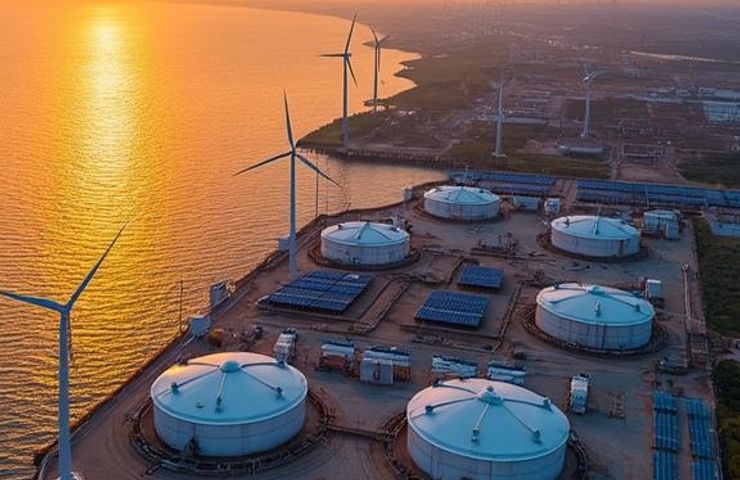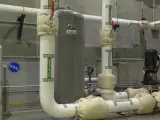
India Recognizes Three Major Ports as Green Hydrogen Hubs to Boost Hydrogen Production
October 16, 2025Back on September 27, 2025, India’s Ministry of New and Renewable Energy (MNRE) put three of the country’s heavyweight maritime hubs—Deendayal Port (formerly Kandla, Gujarat), V.O. Chidambaranar Port (Tuticorin, Tamil Nadu) and Paradip Port (Odisha)—on the map as official Green Hydrogen Hubs under the National Green Hydrogen Mission. It’s more than just a checkbox for clean energy bragging rights; it’s a bold move toward India’s 2070 net-zero goal and a clear signal that the nation wants a chunk of the booming global hydrogen production pie.
Why Ports? The Strategic Advantage
Think about it: ports like Deendayal, VOC and Paradip have been the backbone of India’s trade for decades. Deendayal started life in the 1950s as a modest coastal outpost and grew into a petrochemicals and container hub. VOC was one of the first captive ports, fueling Tamil Nadu’s coal and fertilizer exports. Paradip, sitting on Odisha’s shoreline, has long been the go-to gateway for iron ore and coking coal.
Fast forward, and they’ve all enjoyed upgrades under the Sagarmala program—deeper berths, slick cargo-handling systems, digitized workflows. That existing muscle—deep-water docks, rail-and-road links, pipeline hookups—makes them perfect launchpads for large-scale green hydrogen infrastructure.
The Electrolysis Engine Room
Here’s where the magic happens: each hub will host mega electrolysis plants, firing up electrolysis reactions powered by solar farms and planned offshore wind turbines. You feed water in, electricity does its thing, and out pops pure hydrogen production—zero CO₂ in sight.
Once produced, that hydrogen can be compressed into pipelines, packed into cylinders, liquefied for export or turned into green ammonia. Thanks to the ports’ existing fertilizer and shipping lanes, they can plug right into global trading networks without skipping a beat.
Policy Framework and Financial Incentives
The National Green Hydrogen Mission isn’t just a fancy name. The government’s rolled out all kinds of perks—viability gap funding, capital subsidies, lower renewable power tariffs—for electrolyzer makers and offtakers alike. Plus, they’ve streamlined approvals between MNRE and port authorities. The goal? Get projects off the ground fast and lure in both domestic investors and foreign capital.
Economic Ripples and Job Creation
Building these hubs will set off a wave of new jobs—think engineers wiring up electrolyzers, safety experts handling high-pressure systems, and technicians running quality-control labs. Once everything’s up and running, you’ll see more roles in logistics, fuel-cell ship bunkering, and specialized maintenance.
What’s cool is the local supply chains will spring to life, too. Companies making cryogenic hoses, valves and digital control panels will pop up around each port. That could give birth to a whole ecosystem of SMEs and innovation clusters.
Nearby colleges and trade schools are already tweaking their curricula to churn out hydrogen tech wizards. Before long, we’ll have a steady stream of certified pros ready to dive into the hydrogen economy.
Global Models and Partnerships
India’s not reinventing the wheel here. Ports like Rotterdam and Busan are racing ahead with their own green hydrogen and ammonia bunkering plans. New Delhi’s in talks with Europe’s H2Global platform and Japan’s Hydrogen Energy Ministerial Meeting for tech swaps and offtake deals.
Syncing up with global standards means our three hubs can plug into international hydrogen infrastructure and lock in long-term contracts, giving Indian exports a serious edge.
Challenges on the Horizon
Of course, no game-changing shift comes easy. Electrolyzers and storage tanks still carry hefty price tags, and financing can be tricky. We’re short on trained hands, so massive upskilling programs in cryogenics and high-pressure gas systems are a must. Regulations around storage, pipeline blending and maritime bunkering need to be fine-tuned to global safety norms.
And don’t forget about balancing power. You’ll need advanced energy management systems to juggle variable renewables with steady hydrogen production demand. Getting shipping lines to switch to hydrogen or ammonia-fueled vessels early on could turn these ports into global decarbonization testbeds, shaping future maritime rules.
Looking to 2030 and Beyond
In the next five years, pilots at Deendayal, VOC and Paradip are expected to prove scalable production, storage and export. By 2030, they could be churning out hundreds of thousands of tonnes of green hydrogen and ammonia for domestic industries and overseas markets. Down the road, imagine integrated energy parks with green steel mills, clean fertilizer plants and even fuel-cell shipyards—pure industrial decarbonization in action.
Final Thoughts
Tagging these ports as Green Hydrogen Hubs lines up infrastructure, policy and industry ambition like never before. Sure, there’s a mountain to climb, but with global blueprints to follow and India’s own strengths at its back, we’re staring down the dawn of a full-blown hydrogen era. I, for one, can’t wait to see the first green hydrogen carriers sail out of these ports.



 With over 15 years of reporting hydrogen news, we are your premier source for the latest updates and insights in hydrogen and renewable energy.
With over 15 years of reporting hydrogen news, we are your premier source for the latest updates and insights in hydrogen and renewable energy.